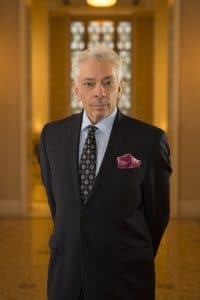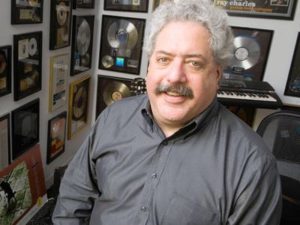
Solutions to Visions of Better Days

Fred Deane
I’ve been publishing YEAR-END Special Issues for a few decades now, and given the disturbing set of professional and personal challenges this year has served us, 2020’s version takes on a more meaningful posture than just about all of its predecessors.
This year has caused all of us to rethink our respective models and has severely altered many business practices that have accompanied our professional lives. On one hand, it has accelerated an attrition trend that appeared to be on an inevitable incline the past couple of years. But on the flip side, these relentless challenges have served as catalysts for innovation, transformation, and most notably, resourcefulness. These admirable qualities will come in handy as we plunge forward into 2021, where the same set of challenges will continue to persist and test our wills.
Our industry can’t merely be about survival: survival of the people, survival of the medium, survival of our sanity. It must be much more than that, and it’s incumbent that our industry’s leadership body resorts to the most important resource they have…human resources.
The medium’s rank and file took a major hit this year leaving a countless number of qualified individuals unemployed in the balance. It’s an understatement to suggest that radio’s most valuable point of differentiation is its companionship to the audience and relationship with its local communities. Well, companionship translates to camaraderie and friendship, which starts and ends with people. In our medium’s case, local personalities connecting and engaging with a brand’s community is a means to an end.
It is our hope at Deane Media Solutions that our leaders and decisions makers utilize our medium’s most valuable assets and conjure up creative and productive solutions for our industry going forward which are all-inclusive when it relates to the hard-working, dedicated people up and down the chain of command across our entire industry.
Now to our panel of deep-thinking experts…

Dom Theodore
Dom Theodore, CEO, Radio Animal Media Strategies
There’s nothing like a crisis to force technological innovation, and this year we’ve seen our share of them. Many personalities have learned to track shows from home, and while the learning curve has been steep in some cases, most stations have developed seamless systems to allow for this. This has both positive and negative implications.
Obviously, on the positive side, this allows for talent to safely perform their shows remotely without the risks of having to enter a studio. The downside is many shows that would otherwise be live and interactive are now recorded and sterile.
But the true innovation this year was not technology-based, it was content-based. Relevant personalities rose to the occasion to help their communities, get the message out about local COVID response, and help listeners maneuver through a very difficult time by providing resources to make their lives better. Most importantly, many personalities provided an escape from all of the problems this year by keeping listeners entertained. That is perhaps the best service we can provide during such a terrible time.
In many ways, this year has brought radio back to the basics of serving the community, and that is a positive thing. However, it has also exposed even more of the shortcomings created by excessive debt loads at many of the big operators. Some companies are using this as an excuse to voice-track even more shifts and lay off even more local talent at a time when we need them the most. This problem isn’t new, it just accelerated this year because of the revenue struggles in our industry.
In a sea of media choices, I still believe the single best point of differentiation that radio has to offer is unique, unusual and compelling talent. Nearly everything we do is duplicatable: the music we play, the contests we do, the imaging we have (much of which is bland and poorly written), but it’s much more difficult, if not impossible, to duplicate a true personality. A great talent brings the rest of the pieces to life.
I believe that many radio stations are “over-programmed.” In other words, they are scripted to the point of being boring, predictable and uninteresting. This doesn’t leave a lot of room for content experimentation, and many of the places where talent used to go to develop their skills no longer offer those opportunities. Even worse, the risk-adversity at most companies has created so much fear within the ranks that innovative programmers can no longer take a chance on a new format idea or show idea.
Some of the biggest format innovations in radio came from renegade and non-conformist PDs, many of whom were once celebrated in our industry. But in the corporate era, where many broadcast companies are run by banks and not broadcasters, the non-conformist types were shown the door. Radio needs to listen to these voices again, and attract the next generation of creative types to our industry, then give them a blank canvass to innovate once again.
We must continue to focus on serving our communities first with information, then with entertainment. We need to continue to provide an escape for the audience as well. But most importantly, we need to focus on content innovation now more than ever. If this year has taught us one thing, it’s that what we considered to be “best practices” might no longer work when the world changes. That makes now a great time to challenge the “norms” and try new things…make new mistakes. Who knows? Maybe you’ll create new “best practices.”

Jon Zellner (photo: Katherine Tyler for iHeartRadio)
Jon Zellner, President of Programming Operations, iHeartMedia, National Programming Group
This is a critical moment in time for radio and our brands. To continue to attract listeners and convert those listeners into fans, the focus needs to be on our points of differentiation. The companionship factor is more important than ever and that, in addition to discovery and surprise, are what sets us apart.
Surprisingly, many of our brands got away from these three elements for a while. We were afraid to play new music. We were worried about sticking to a “safe list” and avoiding occasional surprises that create “perceived depth and variety” and we told the jocks to read liner cards or put a restriction on how long their breaks should be. While all three of these elements have to be done in the proper context and match and exceed listener expectations, they are all advantages that sometimes we forget about.
Programmers should be reminded to write like people speak, and to create interesting and dynamic content between the music while taking some calculated risks when appropriate. Voice talent should be reminded to talk like people talk and our production people should listen to their imaging like a listener, not like a radio person. Our talent should be reminded to be real, uncontrived and hyper-focused on one listener who has more choices than ever for audio entertainment. Instead of being a “DJ,” the talent should be a “party host” and focus on word economy but take those “liner cards” and tell me what they say in a way that’s relatable to that station’s target listener. You can always tell when a talent is just going through the motions as opposed to the ones who are focused on creating a real emotional connection with their audience.
It’s important for us to remember that the means by which our fans access our product is irrelevant. We should think of ourselves as “content and entertainment providers” as opposed to “radio operators.” If someone likes what they hear, they need to relate to receiving that content on a device they enjoy using.
“Radio” for many younger listeners doesn’t necessarily mean they need a “radio” to hear us. Our future depends on us looking beyond radio for talent, digital content operators, promotions and marketing directors and sellers. It depends on us talking to young people to stay relevant and understanding that the best ideas aren’t necessarily coming from inside the industry. It also depends on staying ahead of and embracing technology while recognizing we will be memorable not because of what we do, but because of how we make our listeners feel.
If there’s one thing we learned in 2020, it’s the fact that we don’t necessarily need to work in offices to successfully operate our radio stations. Regardless of the pandemic, if we were building our infrastructure from scratch using 2020 technology, many of our business units would look a lot different. Our leaders should encourage their teams to focus on what they do best. Which is allowing our programmers to create memorable moments with our brands every day, letting our sellers engage and show the power of our medium in any way they can with our clients, and allowing our talent to connect with listeners emotionally so they come to us for unique content they can find anywhere else.

Jon Coleman
Jon Coleman, Founder, Coleman Insights
The inclination of many will be to write off 2020 as a horrible year for our country and for our business. The question is, will radio “get back to normal” in 2021 or 2022, or should it be focused on a new business model?
Significant challenges often force industries to reevaluate, and some good can come out of this one. It may not be what everyone in the industry wants to hear, but companies are being forced to focus on return on investment (ROI). By that I’m not even talking about financial ROI, though that is a part of it, but consumer ROI. What things really generate audience and audience loyalty? Which stations and shows will get a consumer ROI? As an industry, making consumer ROI a priority will require care, balancing broad appeal with a likely slow but narrowing focus to generate more core passion. Plus, as I will address below, I think it is time to start investigating totally new opportunities for radio stations and companies.
But first, let me talk about the here and now. Radio’s workforce, including owners, General Managers, and Program Directors, have been tasked to do more with less. This requires a laser focus on things that really matter. This does not mean that every cost-cutting move is a good one or that radio can be fully healthy by cutting left and right. Owners need to know what the wheat is and what the chaff is. What matters?
First, format-dominant and revenue-critical stations matter. They are the wheat that will get radio to the future. Also, strong personalities, strong music, and strong leaders on those stations matter.
But all this is a status quo or defensive strategy. It is likely to extend the life of the best stations well into the future, but it is not the dramatic cure that will attract new non-users to the medium in large numbers and as passionate fans. Radio needs offensive strategies. Just as you can’t win a football game without an offense, radio cannot reinvigorate the medium with defense alone. It needs to play great defense right now, but it also needs an offensive strategy going forward.
I think the offensive strategy begins with the weak stations that may fill a format hole, but do little for the future. Radio needs to look to new ways to truly energize the medium. This comes from changing the paradigm about how we program our weakest stations. Right now, our paradigm for these weak stations is music, news/talk, 12 commercials an hour, music sweeps, stop sets, morning shows, etc. It’s the world we live in and the world advertisers live in, and it’s been essentially unchanged for decades.
Coleman Insights believes in the importance of these elements for the majority of the most successful stations. Music is still an overwhelmingly important listener benefit, but we also recognize that competition for the music listener is getting harder every day and will get harder in the future.
However, looking down the road, there may not be enough music lanes to support three to five stations in a cluster. And the weakest music or talk stations trick us into thinking we don’t need to think about more important changes that might actually grow the audience and revenue opportunities on these signals. There are already weak sisters in every company and every cluster and there will be more down the road. Employing the strategies of the successful sisters may not be enough for the weaker sister stations.
This is where the current paradigm meets the new competitive world. In order to grow as a medium and stop playing just defense, we must examine other paradigms. We need to find values for consumers that go beyond just our music and personalities. Radio must find new ways by experimenting. I don’t mean throwing ideas willy-nilly against the wall, but strategically considering all ideas, evaluating them carefully, and then throwing them against the wall.
We need to find new ways of attracting both non-consumers and current listeners and making them passionate about what we offer. We do this by creating uncontested market space for growth, rather than continuing to attempt to compete in a vicious sea of competition in a shrinking profit pool. This technique is called Blue Ocean Strategy.
Radio is in the bloody, shark-infested “red” section of the ocean, fighting with itself and constantly emerging competitors. It should be creating new, innovative, never-before-heard concepts to draw new audience in the clear “blue” section of the ocean. Radio needs to Blue Ocean its world. We need to stop thinking about how we can get people to listen to our clusters’ weak stations a little more just so we can squeeze in six more minutes a day and marginally increase our TSL (which is generally pointless or at best a stalling tactic), but instead think about what role radio might play in the lives of consumers in the media world in which we increasingly live. Use this process to develop new types of programs within existing stations or totally new formats that don’t rely on music, stop sets, and the rules of the last 40 years. This does not mean throwing out good principled programming “rules” (throwing the baby out with the bathwater), but it does mean setting up a small tub next to the big one in which we can play with new ideas (smartly experiment).
To that end we need to ask: What groups of consumers are there that don’t listen to radio or do not listen a lot? What interests and excites them? What media do they consume and why?
We should also rethink how we segment the audience. What segments of the population are not currently served by the media landscape as it stands now? Perhaps we should set aside the traditional demographics we use to segment audiences and start examining how our country is reorganizing along nontraditional lines. Rural/Urban, Secular/Religious, etc.
Are there lifestyle segments that might be passionate if they were served? Are there new ways of segmenting political segments versus the traditional conservative, moderate, and liberal? Does the move to the left and right in many media create an opportunity in the middle? What kinds of formats that radio does not, or only minimally offer, could create new interest in the medium? Could there be talk radio targeted at women? Does the popularity of Dave Ramsey suggest a full-time personal finance station? Could radio play a bigger role in the emerging podcast market by having a format devoted to the leading podcasts (on FM)? Is it time to bring back progressive talk radio? Could a well done national financial news-focused news/talk station find success on FM (versus being relegated to 1500 AM) in 2021? Could a Black news network on big FM signals draw a substantial audience? All of these are totally different from radio’s main offerings today or are a clearly narrowing of the appeal in search of a more passionate audience.
As vital as it is for us to think about our radio programming paradigm, we may need to think even harder about the economics of radio. Can new stations be built successfully on a basis other than selling commercials to local advertisers? Is local spot business the only way of doing it? Would the revenue proposition be different if the product on our stations was entirely different?
We can write-off 2020 and go back to normal in 2021, or we can view 2020 as an opportunity to challenge ourselves in 2021 and bring new people to the medium. We can do this by creating new experiences and not mimicking the programming we offer right now. We can do this by creating programming that is so manifestly different that it creates a whole new expectation and is compelling enough to truly impact potential radio consumers and fans.

Mike McVay
Mike McVay, President, McVay Media Consulting
Radio’s challenges begin on the business side of the business. The creative side of the business can always improve, but the assets that radio has (music, personalities, distribution) isn’t the problem. The problem is that these assets are being diminished due to too many commercials, the “dumbing down” of personalities, the elimination of research and ignorance in regard to marketing. Apple Music added air-talent to Apple Music Radio. They understand that personalities are the attraction that create day-to-day tune-in and that personalities are what cannot be duplicated. The other DSP’s will do likewise. Radio has to address these obvious issues.
The local connection that many stations have with a market is valuable, but there is evidence that a nationally delivered show, that’s better than the local shows, can be successful. Local connection is something that the medium is doing right. Delivering news and information, if done credibly, creates a sense of dependence among the audience rallying to help those in need. These are all things that radio does well, and successful stations do these things.
Those broadcasters that acknowledge that content (entertaining or informative programming) is the key to making the most money, and they will be the most successful broadcasters. You still need a great sales team, but big ratings compensate for many weaknesses in sales.
The challenges are many. Listening habits have changed as many are working from home, meaning that some listeners are starting their day later, but research tells us they don’t want their morning show to start later and air later. That means staying the course with your morning shows hours. It’s been difficult for the rating services to capture listening habits accurately during this time, and that’s led to more modeling.
The solutions are most definitely clear. Stay the course, take advantage of lower commercial loads, inform your audience where they can find the services and products they need, and once we have a vaccine, where to get it, and tell the audience how to enjoy life when living in a bubble. It’s going to be a long winter. When America started its shutdown, it was late March. That meant that spring was around the corner. That’s not the case now. Be an eliminator of stress for your audience.

Lee Abrams
Lee Abrams, CEO, MediaVisions
In the face of economic downturn, an aging audience, and non-terrestrial competition, there is a missed opportunity: balancing efforts in revenue, technology and efficient operations, with dramatic creative rethinking. At a time when the challenges have never been greater, it feels as if PROGRAMMING is on autopilot. It’s not about dominant stations, as you can’t argue with success, but it’s the second tier screaming for reimagination in the sound, look and feel.
Stop thinking about attacking the 80’s programming playbook, and start thinking about how you can get in sync with the vibe on the streets in 2020 and beyond. I’m still amazed at the number of stations with tired voice-over, vanilla production that reeks the 70’s, marketing-speak, and music mixes that are not applying the tactics to differentiate and succeed in the new Wild West of music.
I would study the airchecks and architectures from the era where originality and extreme creative ruled, and reinterpret those timeless values for the realities of today. An exercise I’m guessing few stations engage in, opting for a sheep-like sameness in this era of massive change.
Terrestrial radio is EVERYwhere. What an opportunity to use that power to bend culture. It’s not too late, but the clock is ticking to realistically audit your creative and aggressively update with the same intensity as airliners that consistently evolve to meet the future.
It’s not about money. It’s about brainpower and focusing that on updating and upgrading the programming to generate a new dimension of excitement. If there’s a programmer dealing with multiple stations, that’s a problem. It’s illogical to think that one person has the time, focus and expertise to program multiple channels. You need specialists that live and breathe a single station, and have their energies focused to generate greatness. Otherwise, there’s a high probability that those multiple stations will be nothing more than utilities with as much character and magic as your cable operator.
I’d be passionate about radio’s past, but even more passionate and driven to design the next generation of programming.
Will companies allow this? Doesn’t look promising and while still relevant, there’s a lot of denial I see and inattention to innovation beyond operational savings. The future is as positive as its leaders want to make it, and IMHO, the missing ingredient is simple: creating the next generation of radio magic…now.

Buzz Knight
Buzz Knight, CEO/Founder, Buzz Knight Media
Radio needs to push through the many forces of resistance that the medium is up against. There are so many changes in the world, whether it be technology or what consumers/customers are looking for, and the time is NOW to commit to the difficult work of innovation and adding greater value to all constituents, especially the communities that radio serves. It’s time to commit resources, talent and strong will power.
When the medium commits to talent nurturing, management and development, it is properly setting the business up for the future. When talent is minimized or pushed out, we are negating much of the good work. The industry also needs to do a better job of promoting its strengths and values.
Radio Industry leaders need to align better for the future. There are often too many personal agendas holding back progress. Additionally, radio has to find a way to develop new talent along with new formats that will bring those under 20-year-olds into the tent for years to come.
Today’s leaders are more challenged than ever as a result of the pandemic. Leadership requires great resilience, but also a powerful combination of empathy, purpose and collaboration. Leaders need to keep tabs on their people and manage their emotions as a solution to operating in this environment.

Rick Cummings
Rick Cummings, President of Radio Programming, Emmis Communications
As someone nearly out of the industry these days, I’m hopeful my comments don’t seem pessimistic. This industry, one that I’m grateful to, has enabled me to make a good living for 40 years and have fun doing it. Having said that, I think the sobering task before radio is simple survival, not recreating itself.
This pandemic decline makes the recession of a dozen years ago feel like a walk in the park. In the post-recession years, we never really regained the lost revenue. Yes, we made modest inroads in digital and events revenue, but the spot business has been flat-to-down ever since. I think we have history to infer what the ‘new normal’ looks like emerging from the pandemic; namely, an even smaller revenue base. The order of the day is finding a means to survive.
I would still contend that when it comes to music curation and influencers, we are still better than all others. The same is true of personalities. We’re not exclusive like we once were. But we’re very good at it. What holds us back is the growing adoption of on-demand audio choices in lieu of our linear model that is heavily-laden with commercials. Factor in that we’re not sexy to many advertisers these days, and it’s a steep hill to climb. I don’t believe there is a magic bullet.
Instead, I think it will likely be a significant change in cost structure: an ongoing search for a significant alternative revenue stream (we’ve been pursuing that for at least ten years), the industry’s embrace of other platforms (if you can’t beat’em, join’em—after all, we’re who they emulate (see Spotify’s new morning show The Get Up), and a long-term effort to be more competitive with spot-loads.
For a generation, we’ve been unable to market, do any significant R & D, recruit and develop a new generation of talent or find any significant means of taking back listener locations beyond the car, where we are also now threatened with choice like never before. Again, I think the order of the day is survive the brutal impact of the pandemic and then begin to chip away at the myriad challenges before us.
As the current challenges persist, we have learned we can produce quality audio products remotely. I suspect that will impact the way we look at studio/office space emerging from this. We’ll likely see companies assess what they can pay talent (the major sports franchises are doing that, why wouldn’t we?), both behind the mic and managerial. And I hope we’ll see some creative revenue-generation solutions emerging from this. We have huge challenges ahead, but so do most industries.

